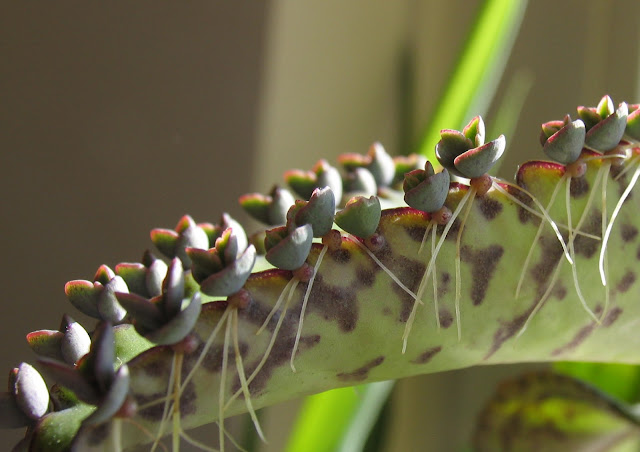 |
Why are my houseplants dying?
|
Having worked in the garden centre industry for may years the most often asked question I would receive is this - 'Why has my house plant died?' The second most asked question, if your are interested, was 'do you have a plant that is evergreen, will flower all year round, will quickly grow to 4 ft and then stop at that height?' They would of course be directed to the artificial plant section as such a plant does not exist. Anyway, back to the question as to why are my house plants dying. Usually the reason is the same in 80% of cases, and if the plant has died with a few weeks of purchase then it tends to reach 95%. That reason is too much water, and it is particularly prevalent during the winter and early spring period when most house plants are dormant.
I understand why it happens, people often cherish their house plants like their children. Children require feeding and watering every day and so without instruction the inexperienced house plant enthusiast will treat their prized specimens the same way. This is fine if you are growing tropical marginal house plants such as papyrus or the umbrella palm, but certainly not for all other plants that have not evolved to grow in waterlogged conditions.
 |
| Waterlogged houseplants sitting in water |
I will explain. The tiny root hairs that grow from the tertiary or lateral roots are just a specialised, single plant cell. And like all plant cells will require oxygen for respiration in order to survive. Plant composts are formulated to have good drainage so as to maintain tiny air pockets within its structure in order to promote a healthy root environment. If the compost is full of water then there are very few air pockets and over time the root hair will die, preventing the plant from taking up live-sustaining water and nutrients. Unable to take up water the plant will begin to wilt, at which point inexperienced house plant owners will water more beginning a never-ending downward cycle of death. As a general rule (and there are exceptions like Saintpaulias) if you pick up a houseplant and water drips out of the base then it is probably over watered. If you have a thin crust of grey slats on the surface of the compost then you are over watering. If you do not allow the top inch or so of compost to dry out before watering then you are probably over waterings. Be aware that plants will require more water during the growing season (late spring to early autumn) and far less during their dormant period. As a rough guide, water weekly during the growing period and monthly outside of the growing period.
The other reasons which can caused plant death are as follows:
1.Too hot! Do not site your houseplants next to a heat source such as a radiator.
2. Too cold. Tropical plants have no resistance to frosts.
3. Fungal infections. These tend to be secondary infections due to the plant being in a poor conditions, such as being over-watered!
4. Insect infestation - keep your eyes peeled.
5. Too drafty. Cold or hot draughts can shock a plant to drop it leaves.
6. Neglect, as in not watering enough.
Just one more thing. Never over-water cacti or succulents as they just cannot cope with this. Equally, cacti and succulents do not live in the desert and will require some water to never watering them will also kill them. You need to work out a happy medium. Again, go back to the water weekly during the growing period and monthly outside of the growing period, but about a quarter of what you would give a regular plant.
In text image credit - By Qumarchi - Own work, CC BY-SA 4.0, https://commons.wikimedia.org/w/index.php?curid=108987691
For related articles click onto the following links:
HOW TO GROW AECHMEA FASCIATA
HOW TO GROW FICUS PUMILA
HOW TO GROW STROMANTHE SANGUINEA 'Triostar'
HOW TO GROW THE SWISS CHEESE PLANT - Monstera deliciosa
IS FICUS LYRATA AN INDOOR PLANT?












